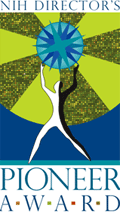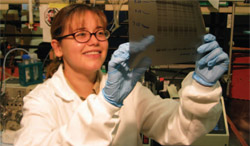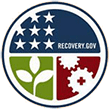We’ve modified the receipt dates for our administrative supplement program Supplements for Collaborative Science (SCS), which helps grantees form new collaborations that enhance their NIGMS-funded research efforts. There will be only two submission deadlines in 2010: January 15 and May 15. All other details of the program remain the same. If you’re a grantee interested in applying for an SCS supplement, please read the entire NIH Guide notice and contact your program director to discuss your plans.
Category: Funding Opportunities
Apply Now for Microbe-Host Interactions Grants
Back in May, I described a concept clearance for a new grant program focused on microbe-host interactions. A number of readers commented on the post, and I was delighted to see the early interest in this new program, as well as other related programs at NIH.
The RFA has now been published in the NIH Guide.
We’re soliciting applications for projects that will reveal the basic principles and mechanisms that govern host-associated microbial community structure and function through studies in the following areas: model systems, community physiology, community genetic interactions, community dynamics, and technology development. Please note that research projects designed solely to carry out metagenomic sequencing or surveys of microbial diversity are outside the scope of this program.
We plan to make 5-6 R01 awards totaling $2.5 million in fiscal year 2010. Letters of intent are due December 15, 2009, and applications are due by January 15, 2010.
Now Seeking Applications for Next Year’s “Pioneers” and “New Innovators”
 NIH has announced the 2010 competitions for the NIH Director’s Pioneer Awards and the NIH Director’s New Innovator Awards. These awards support exceptionally creative scientists who propose highly innovative—and often unconventional—approaches to major challenges in biomedical or behavioral research. Both programs are part of the NIH Roadmap for Medical Research and are managed by NIGMS.
NIH has announced the 2010 competitions for the NIH Director’s Pioneer Awards and the NIH Director’s New Innovator Awards. These awards support exceptionally creative scientists who propose highly innovative—and often unconventional—approaches to major challenges in biomedical or behavioral research. Both programs are part of the NIH Roadmap for Medical Research and are managed by NIGMS.
The Pioneer Award provides $2.5 million in direct costs over five years and is open to scientists at U.S. institutions at any career level. The deadline for applying is October 20, 2009.
 The New Innovator Award provides $1.5 million in direct costs over five years and is designed for early stage investigators at U.S. institutions who have not yet obtained an NIH R01 or similar grant. Applications are due by October 27, 2009.
The New Innovator Award provides $1.5 million in direct costs over five years and is designed for early stage investigators at U.S. institutions who have not yet obtained an NIH R01 or similar grant. Applications are due by October 27, 2009.
For more information about the programs and links to the requests for applications, see the Pioneer Award Web site and the New Innovator Award Web site.
One of the features of these programs that I find most exciting is the annual symposium. This year’s symposium will take place on the NIH campus in Bethesda on September 24 and 25 and will include research talks by the first graduating class of Pioneer Award recipients and by the class of 2008. The 2009 award recipients will also be announced. The symposium will be videocast live and archived at http://videocast.nih.gov.
Innovate Biomedical Computing!

The trans-NIH Biomedical Information Science and Technology Initiative (BISTI) funds a range of projects that advance computer science and technology to address problems in biology and medicine. BISTI, which is led by NIGMS, has just reissued four broad-based program announcements to support “innovations in biomedical computing.” In the past, BISTI has awarded 198 of these grants ranging from $200,000 to $3 million.
The announcements cover traditional research projects; exploratory, high-risk/high-impact projects; small business innovation research; and small business technology transfer grants. They apply to most areas of NIH research, from basic to clinical, and require that more than 50 percent of the proposed research involve computing. For example, investigators can request funds for scientists and software personnel to develop models to analyze a disease, and they can also request funds to obtain data or perform experiments to validate the models. Again, in all cases the majority of effort should be on the computing side.
If you want to significantly expand your computing efforts and capabilities, these funding announcements are a really great opportunity!
New Opportunities to Solve and Study Protein Structures
 Whether you’re interested in a single protein or many, you now have the chance to join the Protein Structure Initiative’s PSI:Biology network, which will apply high-throughput structural approaches to solve interesting biological problems.
Whether you’re interested in a single protein or many, you now have the chance to join the Protein Structure Initiative’s PSI:Biology network, which will apply high-throughput structural approaches to solve interesting biological problems.
We have just released three funding opportunities that will establish the core of the PSI:Biology research network:
Centers for High-Throughput Structure Determination – large-scale centers that will have the capacity to solve structures on the order of several hundred per year.
Centers for Membrane Protein Structure Determination – small centers that will devote special effort to solving the structures of these proteins.
Consortia for High-Throughput Enabled Structural Biology Partnerships – these awards will support functional studies of proteins proposed by individuals or groups of researchers from across all fields of biology as well as support the structural determination of those proteins through consortia with the PSI:Biology structure centers. Ideal projects will integrate functional and structural data for a large number of protein structures to solve significant biological problems.
In addition to these opportunities, we plan to issue program announcements for experimental technology development, computational and molecular modeling and more ways for partners to bring their interests to the target-setting table. We’ll announce these in the NIH Guide and here in the Feedback Loop.
If you have just one or two proteins that need to be solved, you can nominate them as targets for structure determination via the PSI Structural Genomics Knowledgebase, which offers a cool widget so you can easily access the site from your Web page.
UPDATE: The due dates for letters of intent and applications have been extended to September 28, 2009, and October 28, 2009, respectively. For more details, see NOT-GM-09-026.
Interested in Research Training Fellowships?
NIH has just reissued program announcements for Ruth L. Kirschstein National Research Service Award (NRSA) individual fellowships at the predoctoral (F31), postdoctoral (F32) and senior (F33) levels.
 If you plan to apply, be sure to read the recent NIH Guide notice applying to NRSAs. Effective with the August 8, 2009, submission date, NIH will only accept electronic applications for F-series programs. There are other changes, too, including how letters of reference are submitted, how many amended applications you may submit (only one), and how review is structured (there are now five review criteria). In addition, reviewers will use the new scoring system for individual fellowships starting with applications reviewed at the summer 2009 study section meetings.
If you plan to apply, be sure to read the recent NIH Guide notice applying to NRSAs. Effective with the August 8, 2009, submission date, NIH will only accept electronic applications for F-series programs. There are other changes, too, including how letters of reference are submitted, how many amended applications you may submit (only one), and how review is structured (there are now five review criteria). In addition, reviewers will use the new scoring system for individual fellowships starting with applications reviewed at the summer 2009 study section meetings.
I am happy to answer your questions about the F32s and F33s, and Adolphus Toliver can answer questions about the diversity-oriented F31s.
As some of you may know, I recently became the acting research training director at NIGMS after John Norvell retired this past March. For more than 20 years, John provided outstanding leadership for training at NIGMS and across NIH, and he brought about many significant improvements.
I welcome your input on training matters and look forward to working with you in my new role.
Businesses Can Apply for New Technology-Oriented Recovery Act Grants
 NIH has announced two new, technology-oriented Recovery Act funding opportunities targeted to businesses:
NIH has announced two new, technology-oriented Recovery Act funding opportunities targeted to businesses:
- The Small Business Catalyst Awards for Accelerating Innovative Research (R43) will speed innovation by supporting early-stage ideas with commercial potential that promise to greatly advance a technological area within the NIH mission—not merely lead to incremental improvements of existing technologies. NIH plans to award 20 to 25 one-year grants, each up to $200,000 in total costs. Applications from small businesses with no prior NIH Small Business Innovation Research (SBIR) or Small Business Technology Transfer (STTR) support may receive funding priority.
- Biomedical Research, Development, and Growth to Spur the Acceleration of New Technologies (BRDG-SPAN) Pilot Program (RC3) will help bridge the gap between the research and development of promising technologies and the commercialization of these technologies. NIH plans to make at least 10 awards, each up to $1 million in total costs per year for up to three years.
If you’re interested in applying for either opportunity, send your letters of intent by August 3, 2009. Please feel free to contact me offline with specific questions.
Explaining Recovery Act Faculty Recruitment
We’ve received a lot of questions about the Recovery Act faculty recruitment funding announcement. In addition to posting the questions and answers in our Recovery Act FAQs, I thought I’d share them here on the Feedback Loop.
What is the intent?
The intent is to contribute to startup packages for junior faculty so that they have a good foundation for becoming independent, tenure-track faculty members who are competitive for NIH awards.
Why does this use the P30 mechanism?
For technical reasons, this funding opportunity uses a research core. Despite the use of this mechanism, NIGMS does not intend our awards to be anything like a conventional resource or service core.
How will applications be reviewed?
Applications will be reviewed by standard NIH review procedures, in this case a special emphasis panel. Reviewers will consider the institutional selection process and environment, including how candidates will be identified and selected, the departmental and institutional track record for attracting junior faculty and programs available for their professional development.
Please note that we do not intend to make awards based on area of science or specific faculty candidates (more on this later).
How do I format the application?
It is difficult to address application requirements using the standard format of Aims, Background, Preliminary Data and Design and Methods sections. My suggestion is to play it straight! For example, include the history of the search in the Background section and describe the recruitment process in the Design and Methods section. Using subheads also helps.
Should I include a description of the general resources for the whole department, or a general description of what the resources might be for a new faculty member?
My best advice is to frame it in terms of what would be relevant to the area of research–computational clusters, 2P microscopes, MALDI-TOF spectroscope, etc. Departmental resources are undoubtedly sufficiently multi-purpose that you can make access to them a positive feature of your application.
Can we use the award to support more than one recruitment effort?
Yes, but bear in mind that our intent is to produce competitive startup packages in cases of demonstrable need.
Can we use the award to support collaborators and/or co-investigators?
No, funds should be for the support of the new faculty member.
Would a junior faculty recruit who has recently (within the last month) received and accepted an offer be eligible for funding under the P30 mechanism?
No, the funding opportunity announcement specifically precludes this.
Is it appropriate and/or expected to identify potential specific new faculty candidates by name and with a brief description of credentials?
Specific identities are not appropriate, but you should describe the characteristics of the desired applicant pool—high-impact publications, prestigious awards, etc.
The funding opportunity announcement states “describe plans for how their research ideas will be selected, developed and conducted as pilot research projects.” Does this mean we should include funds for supporting pilot research projects in the P30 application budget?
Pilot research projects per se should not be proposed. Rather, you should discuss the general research context and how the interests of a candidate will align with and expand your strategic vision. You should discuss drivers of your funding timeline—when you anticipate the recruit to start, anticipated salary, equipment needs, etc.
Clearing Up Confusion about Supplement Length and Budget Limits
I’d like to address several questions about supplement length and budget limits that were submitted after my last post on requesting Recovery Act administrative supplements.
Supplement Length
You can request a Recovery Act administrative supplement for the remaining active period of a current award. The supplement should not exceed two years if you have more than two years remaining on your award.
Please note that after July 15, 2009, NIGMS will only consider requests for one-year supplements. Also note that you can invoke a no-cost extension (NCE) of your grant through the Commons when your grant is within 90 days of its end date. This applies only to the first request; subsequent ones must be reviewed by NIGMS.
Let’s look at two scenarios:
| Situation | Approaches |
|---|---|
| Your award is within 90 days of its end date in Fiscal Year 2009 | You may invoke a one-year NCE through the Commons and then submit an administrative supplement request with the same end date as the NCE |
| Your award end date is in FY 2010 | If your grant is already in an extension, you should request support not to exceed the current end date. If you think you need additional time as you approach the 2010 end date, you can request another extension and another administrative supplement.If your grant is active but not in an extension, you can in your supplement request state your intent to invoke an extension and request support through the projected end date.
NOTE: Your institution is responsible for processing the NCE at the appropriate time. |
Budget Limits
Formally, you may request any amount for an administrative supplement that fits within the scope of the parent grant and can be justified accordingly. In practice, this means that supplement awards are almost always much less than annual budgets.
As for equipment, $100,000 is a longstanding threshold. But in today’s world, there are many examples of equipment used by a single lab that cost north of that amount, and we will carefully consider such requests. We look at the total amount requested, whether it’s for one piece of equipment or several.

